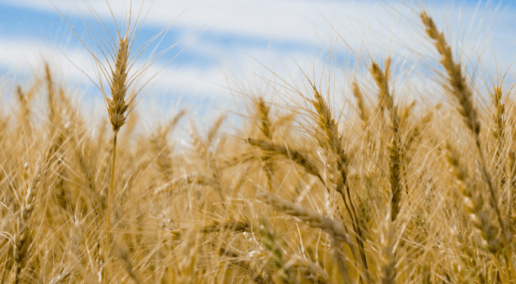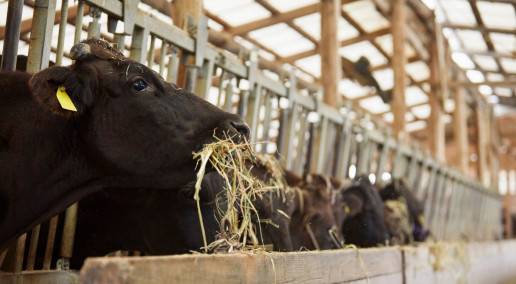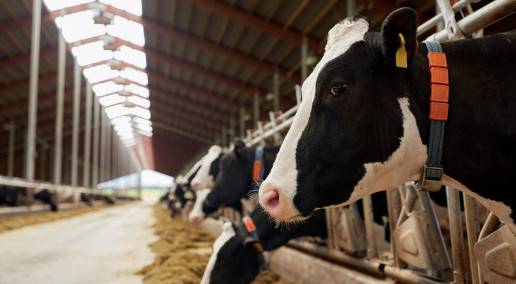During this panel discussion on high performance forage management, panel participants responded to the following questions. The panel participants were:
-
Moderator: James Osborne, Kemin
-
Vincent Audet, Kuhn
-
Jean-Phiippe Laroche, Lactanet
-
Bruno Langlois, Sollio
-
Carolane Neveu, Belisle Solution Nutrition
-
Cedric MacLeod, CFGA
Carolane Neveu is a representative for Belisle Solution Nutrition in Eastern Ontario. She assists producers in their production and self-sufficiency objectives on the farm.
Vincent Audet has held several positions in the field of agricultural machinery, including sales/service, product management, product specialist and area manager for sales. He has a strong commitment to finding solutions to improve the efficiency of Canadian agriculture.
Jean-Phiippe Laroche is part of the innovation and development team of Lactanet. Hee is a member of l’Ordre des agronomes du Québec, and is known for his popularizing skills and his interest in farm sustainability. During his career, he has been involved in various applied research projects related to dairy cattle nutrition and forage production.
Bruno Langlois was part of a team of advisors specializing in food and ruminant management at Sollio Agriculture, formerly La Co-op fédérée. He became the first advisor specializing in cattle production in the Sollio Agriculture team. He helped create the quarterly publication of Focus Opti-Bœuf, a technical and economic extension magazine intended exclusively for cow-calf producers and feedlot operators. He was the manager of the Opti-Bœuf SENC team that specializes in food, management and plant production specific to cattle producers. Bruno retired in 2019.
Cedric MacLeod has nearly two decades of entrepreneurial experience as president of MacLeod Agronomics, an agri-environmental consulting firm specializing in the analysis and integration of sustainable agricultural practices for the Canadian ag-sector. He also operates Local Valley Beef, a grass-fed beef ranch in western New Brunswick. 2021 is Cedric’s sixth year as executive director of the CFGA.
What holds back pasture research?
Today, with climate change and the sustainable cost of labour, more research is justified in this area, but there is a need to introduce the quantity of data. A lot of greenhouse gas (GHG) is related to forage production so managing the risk of climate change through production practice adaptation is very important. Through the lens of climate change, farmers should look at what is growing well and adapt to get improved yields.
What level of adoption is there for a 15 per cent buffer stock?
Many producers don’t have a buffer stock, and we can see the consequences. On the other hand, we see peace of mind, and stability, in those who do. We are still trying to identify the ideal buffer stock percentage. We will be able to identify it in the coming months based on climate data.
Are we well equipped to have a buffer stock?
This depends on the individual farm. Farms that have total mixed ration feeding (TMR) are well equipped. Those with Ag-Bag feed storage solutions also work well. It’s not easy to implement with upright silos. Bruno adds that bunkers are not full of silage most of the year, but we can use forages as part of a feeding plan and can store more tons on an annual basis.
Is there a tool to measure if compaction is adequate when building a silage pile?
There is a density metre that makes many holes to get cores and then measures the weight and volume to evaluate compaction. Standard compaction is 44 pounds per cubic foot minimum. This is the same for corn silage and haylage.
How many producers know their yield per field?
Not many. 16 per cent know their cost of production. This is an area we need to work on going forwards.
We can talk a lot about climate change and carbon retention. Do we think cover crops play a role with carbon retention compared to forages?
Cover crops are an interesting method to increase soil organic carbon (SOC), limit erosion in wintertime and bring in organic matter. Forage crops are still the best for carbon retention and more important than cover crops.
Can we reduce our tillage intensity in forage crops, considering climate risks and wet conditions?
Jean Phillippe says that annual crops are important, which includes tillage. Incorporating forage into these has a positive effect because it means less cultivation. Since forage surface areas are decreasing, we need to turn that around. Vincent adds that cultivation is needed to control weeds. We depend on herbicides or cultivation to do this. As technology develops, we can renovate pastures to bring back species, reseed and avoid cultivation.
Back to Grace



Leave a Comment